How Borce Ristevski beat the murder rap
The tales of Borce Ristevski and Gerard Baden-Clay’s callous slayings of their wives send chills down the spines of anyone who has heard them. Yet one was found guilty of murder and the other manslaughter. Just how different are they?
True Crime
Don't miss out on the headlines from True Crime. Followed categories will be added to My News.
Borce Ristevski accepts he’s a wife killer — just don’t compare him to another infamous one. Gerard Baden-Clay dumped the body of his wife Allison on a Brisbane creek bank in 2012. His case set a precedent for how courts regard a killer husband’s “post-offence concealment and lies”.
Prosecutors in Ristevski’s case seized on a High Court decision in the Baden-Clay case about the use of post-offence conduct as evidence in jury trials.
JAIL SECURITY HIGH FOR RISTEVSKI
ANDREW RULE: WHEELS OF JUSTICE CATCH UP TO BORCE
But in Ristevski’s eyes, his killing of wife Karen and the dumping of her body between two logs in a forest is nothing like Baden-Clay’s crime.
Ristevski and Baden-Clay, of course, have their similarities: each played the grieving husband, doting dads, had theories as to why their wives went missing and money woes.
In the face of public scrutiny, they remained nonchalant.
Even when asked straight-out, “Borce, did you kill Karen?”, Ristevski remained unmoved, comforted by a daughter grappling to understand where her mum had gone and what had happened to her.
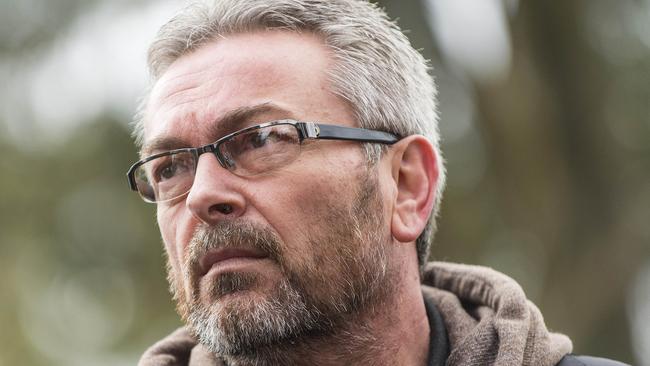
While both wove a web of deceit — which became more elaborate as police closed in — there is one main difference: Baden-Clay was a premeditated murderer with a motive, while Ristevski contends he was a spontaneous killer.
That difference is murderous intent — which must be proven to secure a murder conviction.
The prosecution in Ristevski’s case was relying on his lies, omissions and inconsistent statements after Karen’s death to prove that he killed her with murderous intent.
But it was all they had, in absence of a motive and cause of death, and the Supreme Court deemed that it would not be enough to convince a jury that he intended to kill Karen.
Baden-Clay was found guilty of murder, Ristevski has pleaded guilty to the lesser charge of manslaughter.
The post-kill conduct of both men was a central piece to the police puzzle.
“The lack of any evidence of motive, physical altercation, or any ascertainable cause of death in (Ristevski’s) case distinguished it from Baden-Clay, where extensive evidence was led regarding the motive of Baden-Clay in killing his wife due to his ongoing extramarital affair, as well as evidence pointing to a likelihood of a physical confrontation between Baden-Clay and his wife,” Ristevski’s legal team told the Supreme Court.

After killing his wife, Baden-Clay immediately engaged in a calculated cover-up, dumping her body 14km from their Brookfield home in April 2012, with it emerging on a creek bank 10 days later. He even sent her text messages he knew she could never return.
He had a clandestine love affair with another woman, Toni McHugh, and there was financial stress between he and Allison. That was the motive, police would say — the secret lovers’ dream of a happy ever after together and Allison’s $1 million life insurance payout that would have cleared his debts.
There were also scratch marks on his face — from a razor he would invent — when in reality Allison inflicted them when she struggled and fought for her life.
Baden-Clay’s face was a picture of well-orchestrated strain in the days after her disappearance as he pleaded with journalists to find his wife, despite having blood on his hands.
The prosecution taking on the Ristevski case stated Baden-Clay was the closest case it could rely on to show Ristevski should face trial on the notion his post-offence conduct showed he intended to murder Karen.
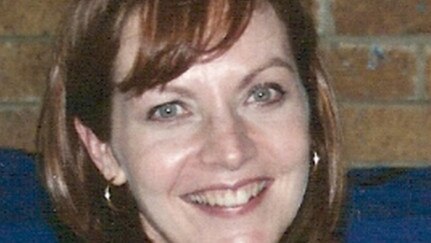
The police case against Ristevski was highly circumstantial — but taking the evidence as a whole, piecing together the various strands, would show he murdered Karen at their Avondale Heights home on June 29, 2016, the prosecution argued.
Ristevski saying he had a “motive not to kill” was a “long bow”, according prosecutors, and was not relevant when trying to prove his intent to murder.
Ristevski says when he drove his wife’s Mercedes-Benz with her in the boot to Mount Macedon, turning off his phone and her phone and disposing of her body, he did not do so because he was guilty of murder.
BORCE FINALLY ADMITS TRUTH TO WIFE’S DEATH
“This showed no more than that the accused did not want to be held responsible for the death of his wife and the serious consequences that would flow,” his legal team would argue.
The autopsy on Karen’s body could not help the police — it was so badly decomposed, it shed no clues. Now, only Ristevski knows how she died.

His lies, inconsistencies and omissions came in spades as did his manoeuvres to mislead. The cover-up was well entrenched. The media increasingly became fascinated with the story … and him.
In a tapped phone call he told his daughter Sarah not to trust police.
He was angry at officers and how they spoke to Sarah and he stopped co-operating with detectives.
“They don’t give a f---,” he was heard saying to Sarah in a listening device planted in house.
Ristevski changed phone numbers twice — aware that police had him bugged — and he coached family and friends not to speak to police.
“Make sure you don’t say anything … don’t let … tell ‘em anythin’ that I spoke to you about, nothing at all,” he told one friend.
Despite his concerned front at media press conferences, he did not phone family or friends to raise the alarm about Karen’s disappearance. When Karen’s loved ones put out missing person posters, he went to his room to sleep.
He hadn’t even called his wife to check on her despite the fact she was supposedly missing.
Ristevski changed his story about the morning of Karen’s disappearance several times. She left through the front door, then the garage door. Crucially, CCTV did not capture her leaving at all.
He also told police at one stage he was doing bookwork, then buying shisha and then driving an Uber.


Ristevski at one stage denied he drove his wife’s black Mercedes-Benz car but later admitted he drove it up the Calder Highway because it had a faulty fuel gauge. It mysteriously corrected itself when he hit a bump in the road and he came home.
He changed stories about when he drove the black sports car and where. CCTV once again proved vital, along with phone towers which allowed police to retrace his steps and plot where he was.
The CCTV footage revealed he was driving Karen’s car for three hours the day she disappeared but he initially told cops he cruised in it for 1.5 hours that day.
He told investigators he did not switch his phone off — although phone records proved otherwise.
There were also the Google searches on a family iPad mainly about how Google tracks mobile phones and one about how police can detect traces of blood.
Ristevski continuously played the suffering husband just looking for answers. From being a pallbearer at Karen’s funeral with grief etching his face, to when A Current Affair called him after a body had been found at Mount Macedon.
“Well, it’s got nothing to do with me,” he told them.
Police grabbed at anyone who could help stack up their case — even journalists gave statements against Ristevski and how he was more interested in clarifying the family’s financial situation was being examined in newspapers across the country, than what happened to Karen.

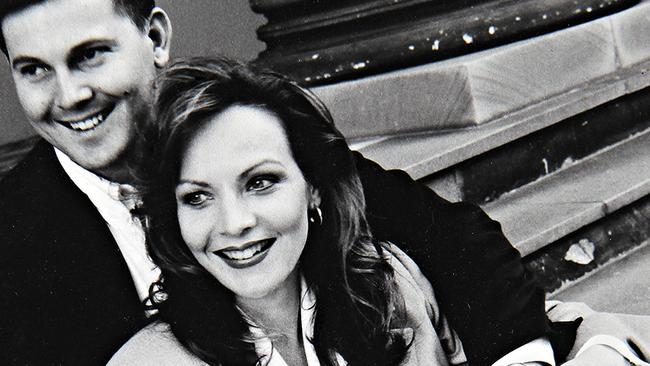
But once again, he claims he did this not because he was a murderer but because he wanted to avoid detection and be held responsible for the death. To Ristevski, the post-offence conduct was all the evidence the Homicide Squad had to prove murderous intent.
For those batting for Ristevski, this case lacked any premeditation. Ristevski even relied on two shovels found in the garage which he did not use to bury Karen.
Ristevski used several strands to argue that his post-offence conduct did not show he was a murderer, rather just a killer who acted spontaneously and in a panicked state, fearing a long jail term and irreparable damage to the relationship he had with his daughter.
No motive, no history of violence against Karen and the strong relationship he had with daughter Sarah were among the key elements.
Police had no evidence of a physical fight and no witnesses to anything untoward on the morning Karen was killed.
Although their suburban fashion store, Bella Bleu, was in financial crisis, it could not prove murder — Karen’s death would have made the situation worse as she was the “heartbeat” of the store, his defence would submit.
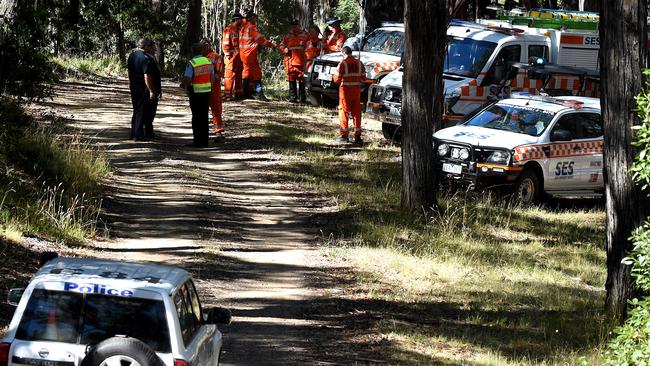
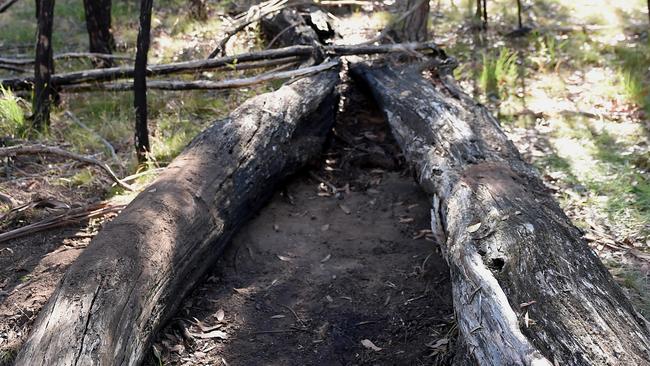
Outside the court files, there were other theories being canvassed. Karen’s stepson Anthony Rickard wildly suggested Karen was about to break up with Ristevski because of an unresolved family conflict.
Ristevski’s brother, Vasko Ristevski, claimed his sister-in-law was alive and fled overseas to China or the US on a fake passport to escape the attention on the family.
The Crown Prosecution disagreed with Ristevski’s contention that he was not a cold blooded wife killer — even if there was no evidence of motive of physical confrontation in his post offence conduct.
To them this was a man who lied, stayed quiet, played a fake caring husband attempting to mislead friends, family, media and detectives, and, in the process, leading them on wild goose chases. His measures to conceal the crime were “of extreme nature”, the prosecution would argue. The speed in which he disposed of Karen’s body was “significant”.

The length of his cover-up showed this was just not an accidental killing, they argued.
The fashion store’s dire financial state was evidence to be used for context — Karen and Ristevski were arguing on the morning of June 29, 2016, about the state of the business and the fight escalated.
WHAT BORCE’S TIME IN JAIL WILL BE LIKE
For the prosecution, Ristevski’s act of driving the body to a remote location, dumping it then covering it with branches was enough to show murderous intent. If it was a spur of the moment killing or unintentional — a man who loved his wife for more than 20 years would do things differently.
“This is because one would expect, as a matter of human experience, an accused to call for help or call an ambulance or the authorities in circumstances where an unlawful and dangerous act manslaughter had occurred,” Supreme Court Justice Christopher Beale would say in his judgment recalling the Crown’s arguments.
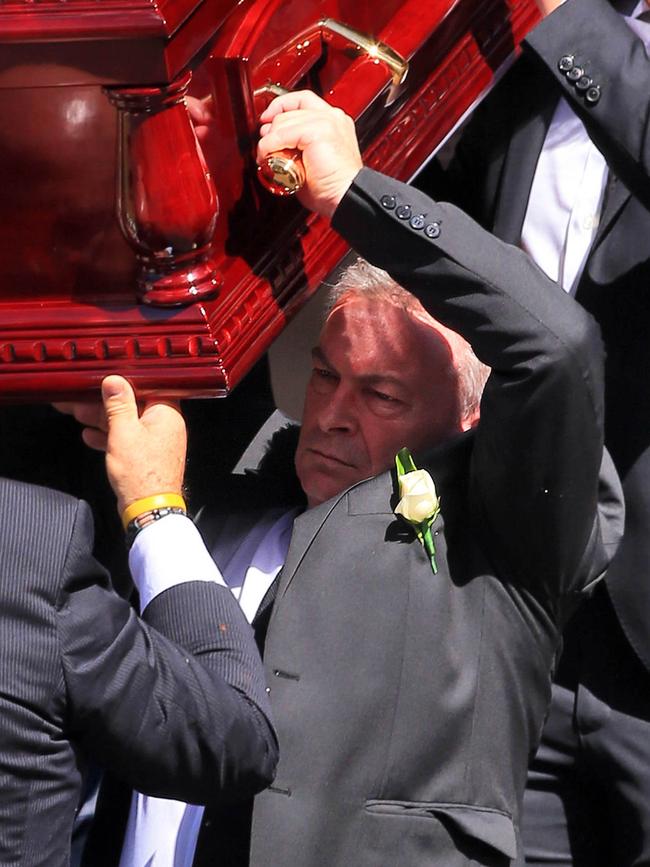

Karen’s dumped body was found wedged between tree trunks off a bush track near Mt Macedon, 80km from their home — eight months after she disappeared.
The murder case against Ristevski was never tested in front of jurors after Justice Beale determined that while Ristevski’s post offence conduct demonstrated he killed Karen, it did not prove he did so with murderous intent.
As well as the lack of any other evidence of murderous intent, inability to ascertain a cause of death and lack of evidence of any motive or physical altercation, differences in the law in Victoria distinguished it from the Baden-Clay case, Justice Beale found.
Just like that, Ristevski stopped his 987 day charade.
“Guilty,” he said when asked how he would plead to a single charge of manslaughter after some backroom legal dealings.
Murderous intent and post-offence conduct dogged Baden-Clay’s case and resulted in a four-year court battle and a 15-year jail sentence.
WHAT DROVE BORCE TO KILL HIS WIFE?
He was found guilty of murder, but his conviction was downgraded to one of manslaughter after an appeal’s court ruling.
The High Court later reinstated his murder conviction.
Prosecutors trying to get Ristevski on a murder charge relied heavily on the arguments advanced in the Baden-Clay case.
But Justice Beale was not entertaining the arguments.
Justice Beale agreed the two cases had their similarities — but their differences were “more striking”.
Ristevski was right when he told a relative: “It was not up to me to clear my name.”
